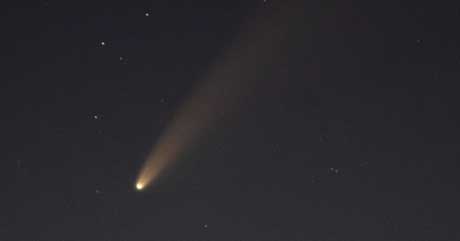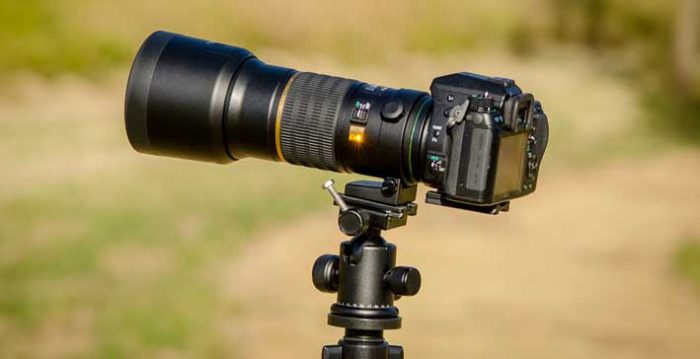Comets can appear to come from any direction of the sky at any moment. According to the location of the sky where they make their appearance, they can become very bright before they are noticed; but this is usually because they appeared in an area of the sky that is not searched and/or accessible to the professional sky survey programs. For an amateur astronomer to discover a new comet, he/she should search areas of the sky that the sky survey programs avoid.
Amateur Comet Hunting – The Basics

Amateur astronomers – those who are also comet hunters – are still very active and still discover comets each year. Some of the “seasoned” comet hunters still sit in front of their telescope – peeking through the eyepiece, while some have converted over to digital techniques such as computer controlled telescopes with astronomical CCD cameras, or modified Digital Single Lens Reflex cameras (DSLR) to help detect objects fainter than the eye can visually detect.
When comet hunting visually, the larger the telescope (such as a 16” or 18” reflector), the better the possibility of picking up a new comet while scanning the skies. But take caution, if your telescope is too large to set-up by yourself, you will likely end up with a back injury or get frustrated with the aggravation of setting-up the telescope and finally give up.
When searching for comets – especially visually – the method of “scanning the sky” is commonly done in a sweeping method. This sweeping method is determined by the person who is doing the comet hunting. There are really no standard methods to search for comets, but focus must be spent to thoroughly cover certain areas of the sky. Too, a detailed sky chart is a must to eliminate any false comets. We have provided you detail about astronomy; if you want to explore your knowledge, look at more info.
Comet Hunting Equipment – The Meade Telescope and Canon DSLR
Equipment to search for comets will likely vary according to your own desired specifications, needs, requirements, and what you can afford. This can vary from a standard pair of binoculars, a wide field 50mm refractor, 0.50-meter light-bucket reflector, a DSLR – the list can go on-and-on.
This set of information will cover comet hunting with the Meade LX200 GPS and a Canon DSLR. The Canon DSLR has become a very popular camera for astrophotography. This camera is easily connected to the Meade LX200 GPS and both the camera and telescope can be controlled by a computer.
Initially, the Meade LX200 must be properly polar aligned, and must be capable of performing accurate slews (moving from various locations in the sky). A variation of software packages can be used to control the telescope, or it can be controlled manually. Basically, the comet hunter must be able to image an area; slew to and image another area; and repeat this until several areas have been imaged. This should be repeated until each area has been imaged at least three times over a period of no less than an hour.
Scanning DSLR Pictures for New Comets

When hunting for new comets, the images are normally visually scanned. Be on the look-out for fuzzy objects that appear to slightly move between each image. It will take a little experience to learn how comets move in images and practice will be needed to pick them out.
A “blinking” program will likely improve your possibilities for detecting comets. The program will use your images and, in a way, play a movie of the images that you have collected. These images will need to be of the same area. If properly done, the images will be aligned, and when blinked, the stars will appear to remain stationary and any minor planets such as comets will show their movement.
One of the most effective programs for blinking is Astrometrica.
Areas to Search for Comets
With the sky surveys covering most of the sky, there’s little room left for amateur astronomers to discover comets. Still, at least one comet is discovered per year by an amateur astronomer.
The primary areas of the sky left available for the amateur astronomer to discover comets are typically near the western horizon just after dark and the eastern horizon just prior to daybreak. The sky surveys normally avoid these areas due to their telescope slew limits and the brief amount of time available to search these areas.
Searching the rich field of the Milky Way cloud is also a good area to search. The star fields are rich in this area and the sky survey’s auto-detection software packages have hard times detecting objects in the rich fields. Too, this area is somewhat difficult to search even for the amateur astronomer. Some images can contain thousands of stars – making it difficult for comets to be noticed. But comets have been discovered using this method.
Reporting a Newly Discovered Comet
New comet reports must be submitted to the Minor Planet Center – IAU Central Bureau for Astronomical Telegrams. Before you decide to report your “potential” newly discovered comet, there are a few things that you MUST check:
- provide at least two nights of observations and measurements
- contact a reliable and trustworthy observatory to follow-up on your observations
- verify that it is not a known comet
- only submit images if they are requested by the IAU
If you submit false observations to the IAU, they will eventually reject all of your claims. It is important to validate your discovery and be 100% sure that it is real. The information listed here is only a very brief introduction to comet hunting. If you are interested in pursuing this “sport”, spend a lot of time studying this subject and contact some of the well known comet hunters for other comet hunting methods.
Continue Research in Comet Hunting

The information listed in this guide only provides a general introduction to comet hunting with a Meade LX200 GPS and DSLR. Those who find this information valuable should continue researching the field of comet hunting before investing a lot of money and time to be wasted if you happen to loose interest.
There are many other methods that can be utilized to search for comets – some cheaper, some more expensive. But no matter how you decide to search for comets, remember that you are performing real research and it should not turn into a job – astronomy should be fun!

